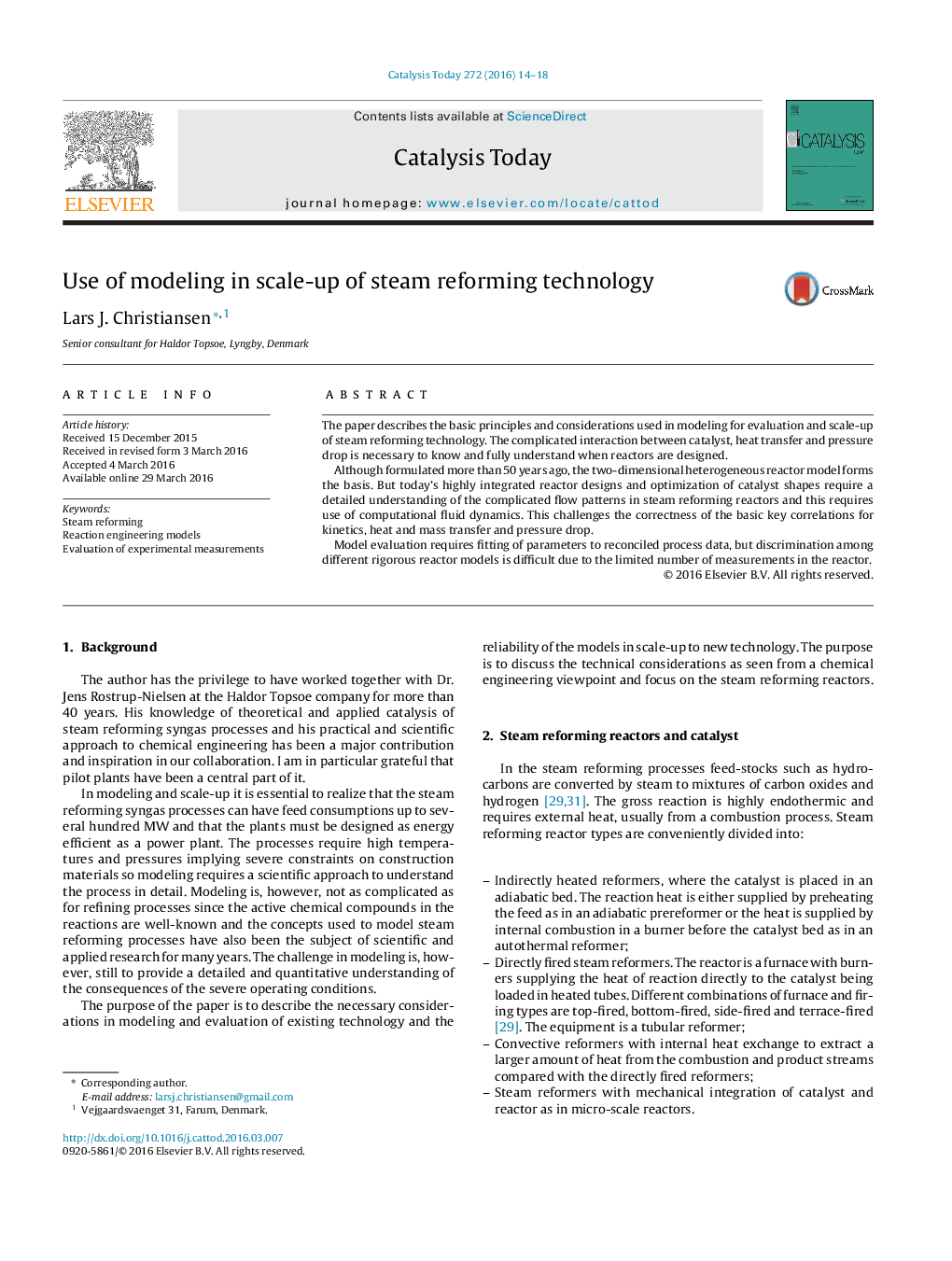| Article ID | Journal | Published Year | Pages | File Type |
|---|---|---|---|---|
| 53447 | Catalysis Today | 2016 | 5 Pages |
•Modelling of catalytic steam reforming reactors using conventional models and CFD.•Models for kinetics, heat transfer and pressure drop.•Scale-up from laboratory and bench-scale to industrial reactors.•Evaluation of experimental data and model validation.
The paper describes the basic principles and considerations used in modeling for evaluation and scale-up of steam reforming technology. The complicated interaction between catalyst, heat transfer and pressure drop is necessary to know and fully understand when reactors are designed.Although formulated more than 50 years ago, the two-dimensional heterogeneous reactor model forms the basis. But today’s highly integrated reactor designs and optimization of catalyst shapes require a detailed understanding of the complicated flow patterns in steam reforming reactors and this requires use of computational fluid dynamics. This challenges the correctness of the basic key correlations for kinetics, heat and mass transfer and pressure drop.Model evaluation requires fitting of parameters to reconciled process data, but discrimination among different rigorous reactor models is difficult due to the limited number of measurements in the reactor.
Graphical abstractFigure optionsDownload full-size imageDownload high-quality image (144 K)Download as PowerPoint slide
